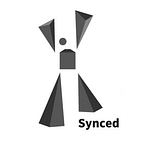DeepMind AlphaFold Delivers “Unprecedented Progress” on Protein Folding
In 2016 Google’s DeepMind stunned the world when their Go computer AlphaGo secured a historic victory over Korean grandmaster Lee Sedol. Yesterday the UK’s top AI team delivered their latest “wow moment” as their AI system AlphaFold topped the Critical Assessment of Structure Prediction (CASP) competition. CASP is a virtual protein-folding Olympics, where the aim is to predict the 3D structure of a protein based on its genetic sequence data.
DeepMind Founder and CEO Demis Hassabis hailed the victory in a tweet: “Proteins are essential to life. Predicting their 3D structure is a major unsolved challenge in biology and could impact disease understanding and drug discovery. I’m excited to announce that we have won the CASP13 protein folding competition!”
AlphaFold’s SUMZ score of 127.99 was 20 points higher than the second ranked team, achieving what CASP called “unprecedented progress in the ability of computational methods to predict protein structure.”
For those unfamiliar with the oft-targeted protein folding conundrum, here is what you need to know:
- Proteins are our bodies’ building blocks and perform a vast array of essential functions. A protein molecule is made of a string of smaller components called amino acids, which fold into the molecule’s native 3D shape.
- The protein folding problem involves determining how the string of amino acids encodes the 3D shape of a protein molecule. This can produce a better understanding of proteins and enable scientists to change their function for the good of our bodies — for example in treating diseases caused by misfolded proteins, such as Alzheimer’s, Parkinson’s, Huntington’s and cystic fibrosis.
- The protein folding problem is regarded as one of the grandest biochemistry challenges of the last 50 years. Current approaches include using algorithms to compute the 3D structure of proteins with amino acids sequence data, or using X-ray crystallography and other techniques to image a protein structure.
DeepMind researchers used deep neural networks to learn the correlation between the shape of a protein molecule and its amino acid sequence. The physical properties of a protein molecule include the distances between pairs of amino acids and the angles between chemical bonds that connect those amino acids. The model came up with a score that estimates the accuracy of a proposed protein structure, then used gradient descent — a common deep learning algorithm that finds the minimum of a function — to optimize that score.
While DeepMind has been working on protein folding for two years and has significantly advanced the development of protein engineering, Hassabis admitted in an interview with The Guardian that the technique still requires further improvements. “We’ve not solved the protein folding problem, this is just a first step.”
There have been rumours that Google was concerned about its cash-burning research subsidiary. Business Insider reported that DeepMind lost US$$366 million in 2017, and their spending on cutting-edge research shows no sign of slowing down.
But with the new research breakthrough in biochemistry, Google may want to reconsider its next step: should it realign DeepMind toward short-term profit pursuits, or continue underwriting its more ambitious AI innovations?
Journalist: Tony Peng | Editor: Michael Sarazen
2018 Fortune Global 500 Public Company AI Adaptivity Report is out!
Purchase a Kindle-formatted report on Amazon.
Apply for Insight Partner Program to get a complimentary full PDF report.
Follow us on Twitter @Synced_Global for daily AI news!
We know you don’t want to miss any stories. Subscribe to our popular Synced Global AI Weekly to get weekly AI updates.
